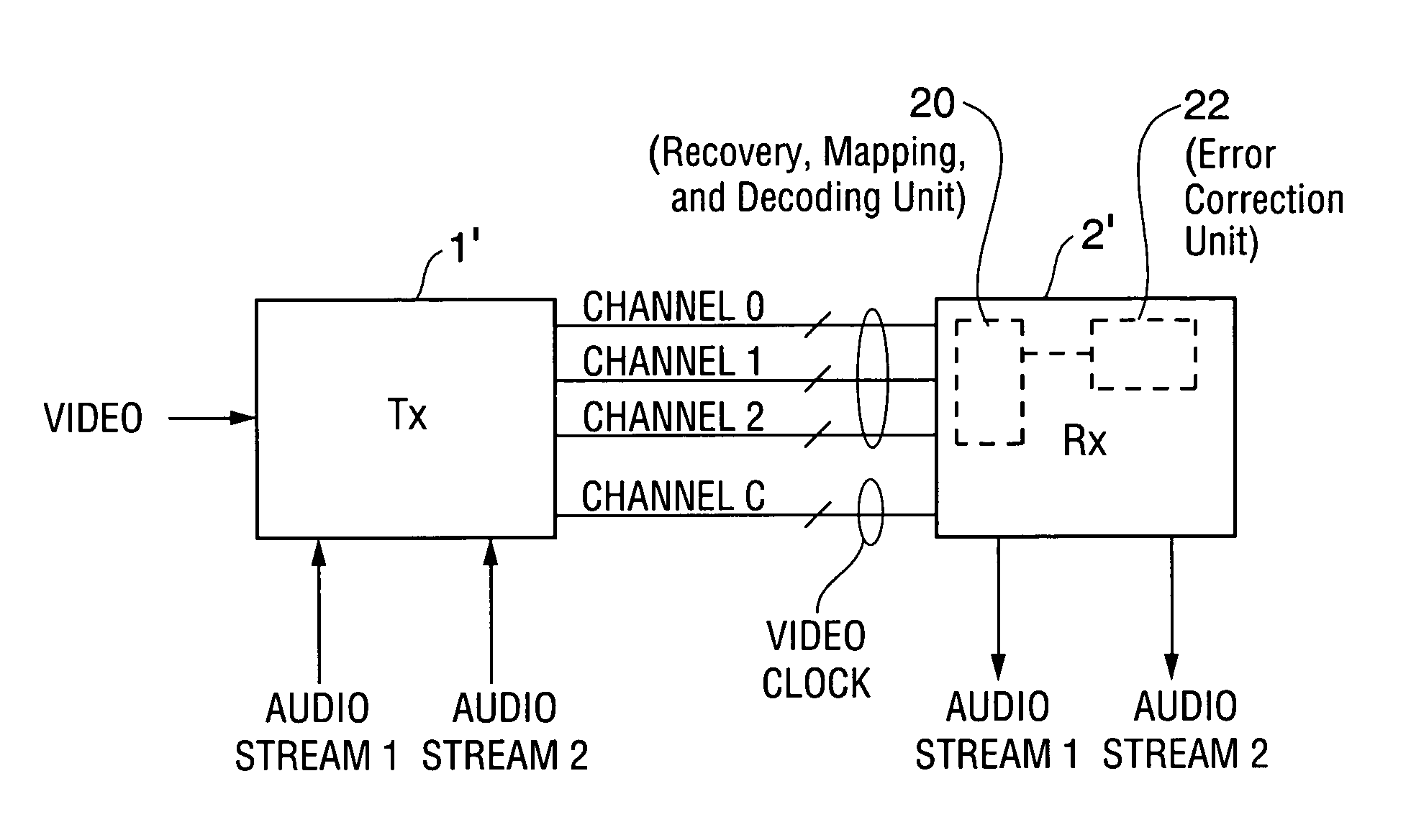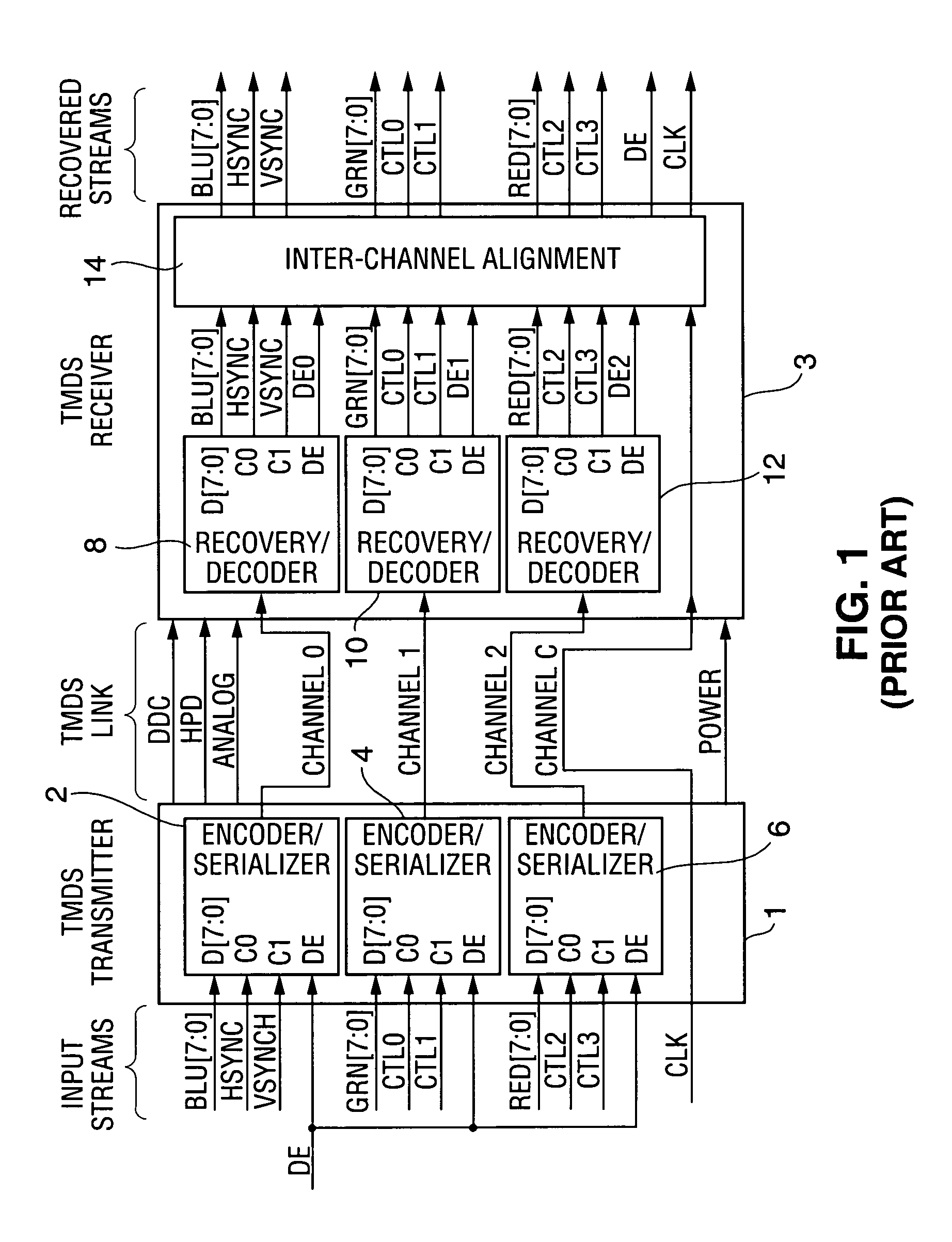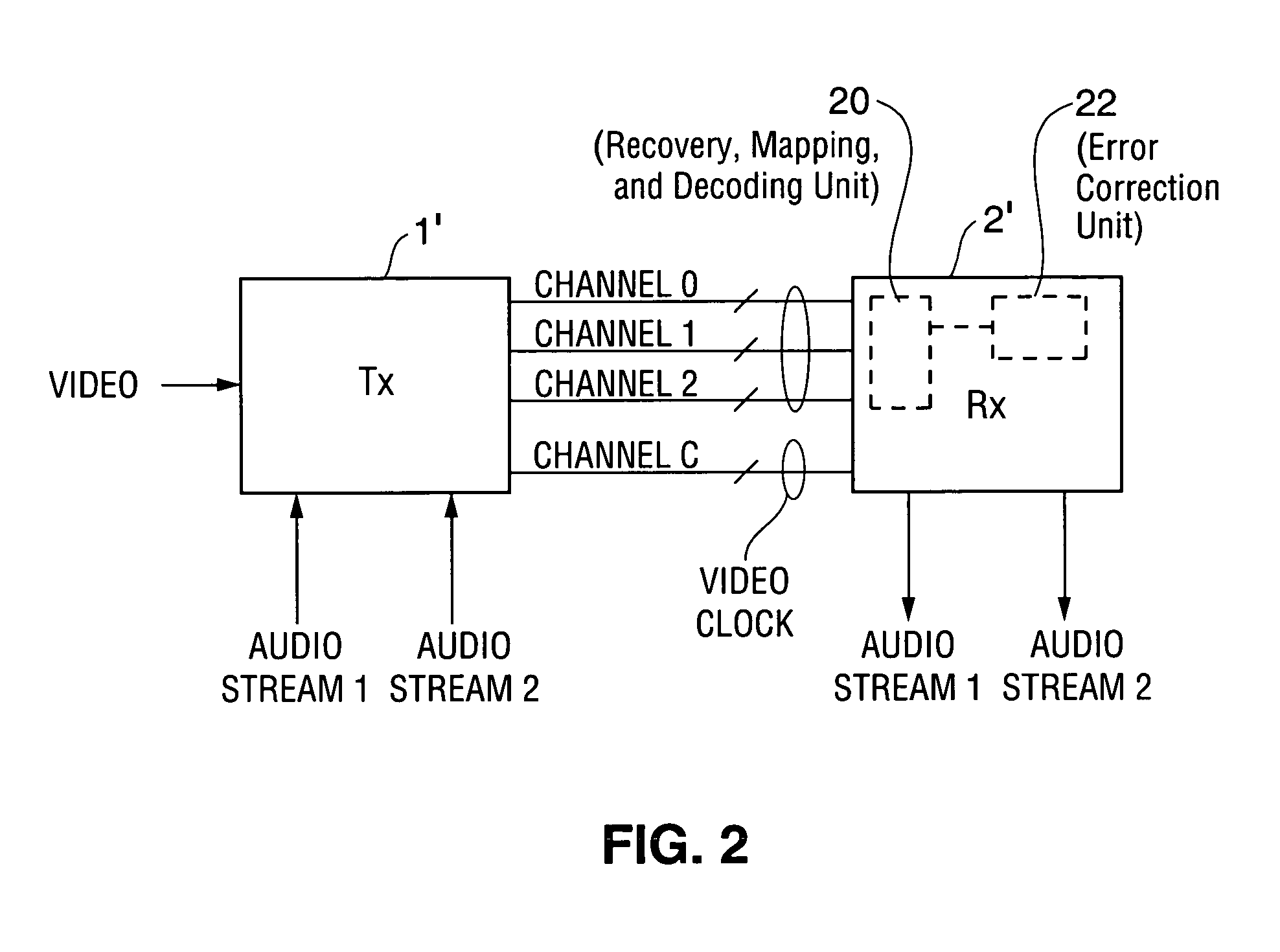Method and system for reducing inter-symbol interference effects in transmission over a serial link with mapping of each word in a cluster of received words to a single transmitted word
a serial link and inter-symbol technology, applied in the field of encoded data transmission, can solve problems such as encode input data, and achieve the effects of reducing the ratio of m, reducing the rate at which source data can be transmitted, and reducing the bit-error rate (ber)
- Summary
- Abstract
- Description
- Claims
- Application Information
AI Technical Summary
Benefits of technology
Problems solved by technology
Method used
Image
Examples
Embodiment Construction
[0049]During transmission of data over a serial link from a transmitter to a receiver, inter-symbol interference (“ISI”) can give rise to errors that cause the received data to differ from the transmitted data. The rate at which such errors occur depends on such factors as the channel medium, and when the data are patterns of binary bits, the particular bit patterns that are transmitted. In accordance with the invention, data are encoded for transmission over a serial link with bit patterns that are less susceptible to ISI during transmission over the link than are the patterns determined by conventionally encoded versions of the same data. Thus, the data are transmitted more reliably in accordance with the invention, and with reduced error rate, than are conventionally encoded versions of the same data. More specifically, data are encoded in accordance with the invention using a subset (a “robust” subset) of a full set of code words. Typically, the code words in the full set have e...
PUM
 Login to View More
Login to View More Abstract
Description
Claims
Application Information
 Login to View More
Login to View More - R&D
- Intellectual Property
- Life Sciences
- Materials
- Tech Scout
- Unparalleled Data Quality
- Higher Quality Content
- 60% Fewer Hallucinations
Browse by: Latest US Patents, China's latest patents, Technical Efficacy Thesaurus, Application Domain, Technology Topic, Popular Technical Reports.
© 2025 PatSnap. All rights reserved.Legal|Privacy policy|Modern Slavery Act Transparency Statement|Sitemap|About US| Contact US: help@patsnap.com



